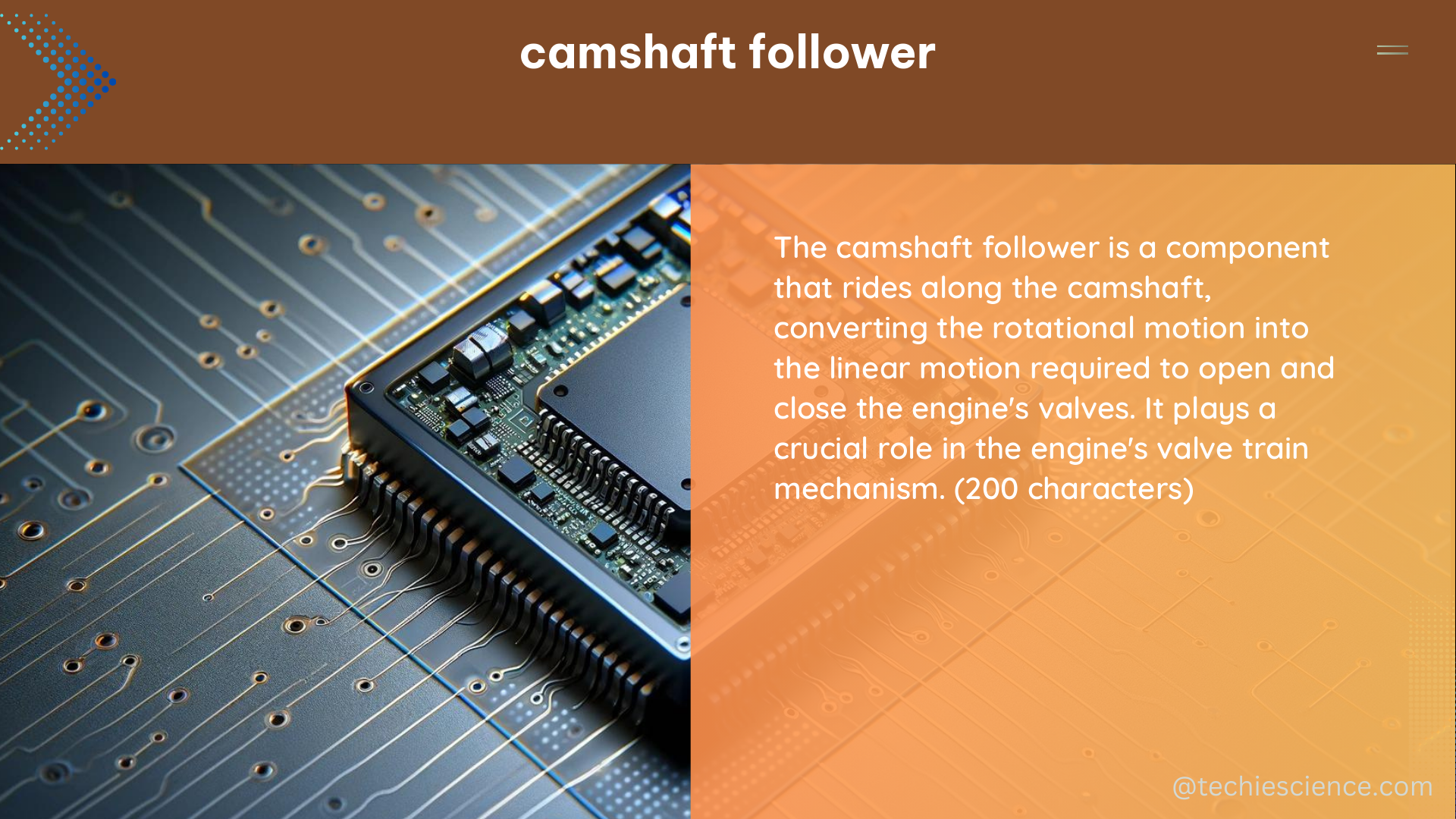The camshaft follower is a critical component in an internal combustion engine, responsible for converting the rotational motion of the camshaft into linear motion, which in turn actuates various engine components like valves. Understanding the technical specifications and performance characteristics of camshaft followers is essential for maintaining and optimizing engine efficiency, particularly in high-mileage vehicles.
Dynamic Response and Optimization Techniques
One of the key aspects of camshaft follower performance is its dynamic response, which can be measured and optimized using advanced techniques. Jerk optimization and stress optimization are two such methods that can help improve the durability and efficiency of the camshaft follower.
Jerk optimization focuses on minimizing the rate of change of acceleration, or jerk, experienced by the camshaft follower during operation. This helps to reduce the impact forces and vibrations, which can lead to premature wear and failure. By optimizing the jerk profile, engineers can design camshaft followers that are more resistant to fatigue and can withstand the demanding operating conditions of modern engines.
Stress optimization, on the other hand, aims to minimize the stresses experienced by the camshaft follower during its operation. This is particularly important for high-performance engines, where the camshaft follower is subjected to higher loads and more frequent valve actuation. By optimizing the stress profile, engineers can ensure that the camshaft follower is able to withstand the increased demands without compromising its reliability or service life.
Camshaft Follower Components and Specifications

When it comes to specific camshaft follower components, the cam follower found in Volkswagen and Audi 2.0T FSI engines is designed to transfer motion into the high-pressure fuel pump. This component is typically rated for a 2-year warranty, which may or may not include unlimited mileage.
For DIY projects involving camshaft followers, it’s important to consider factors such as brand preferences and the availability of replacement screws. The use of copper grease on these screws may or may not be recommended, depending on the proximity to fuel and individual preferences.
Measurable Data and Performance Characteristics
In terms of measurable data, contact force measurements in cam and follower lubricated contacts can provide valuable insights into the performance of these components. The maximum measurable normal and friction forces for these contacts are 6,000 N and 900 N, respectively.
Another important parameter affecting the friction and performance of camshaft followers is the slide-to-roll ratio (S). This ratio can be calculated using the formula S = Δu / u, where Δu is the sliding velocity and u is the entraining velocity. A lower slide-to-roll ratio is generally desirable, as it indicates a higher proportion of rolling motion compared to sliding, which can help reduce friction and wear.
Camshaft Follower Maintenance and Replacement
Proper maintenance and timely replacement of camshaft followers are crucial for ensuring the long-term reliability and performance of an engine. Regular inspections should be performed to check for signs of wear, such as pitting, scoring, or excessive clearance between the follower and the camshaft lobe.
When replacing camshaft followers, it’s important to use high-quality, OEM-approved components that meet the specific requirements of the engine. Aftermarket or generic replacements may not provide the same level of performance and durability, and could potentially lead to premature failure or other issues.
Conclusion
In summary, the camshaft follower is a critical component in an internal combustion engine, and understanding its technical specifications and performance characteristics is essential for maintaining and optimizing engine efficiency. By leveraging advanced optimization techniques, measuring key performance data, and following proper maintenance and replacement procedures, you can ensure that your engine’s camshaft followers are operating at their best, delivering reliable and efficient performance for years to come.
References:
- Measuring cam-follower performance
- Question about HPFP cam followers
- Tribological Behavior of Cam-Follower Contacts: Experimental Investigation and Numerical Simulation
- Camshaft Follower Design and Analysis
- Cam Follower Wear and Failure Analysis

The lambdageeks.com Core SME Team is a group of experienced subject matter experts from diverse scientific and technical fields including Physics, Chemistry, Technology,Electronics & Electrical Engineering, Automotive, Mechanical Engineering. Our team collaborates to create high-quality, well-researched articles on a wide range of science and technology topics for the lambdageeks.com website.
All Our Senior SME are having more than 7 Years of experience in the respective fields . They are either Working Industry Professionals or assocaited With different Universities. Refer Our Authors Page to get to know About our Core SMEs.